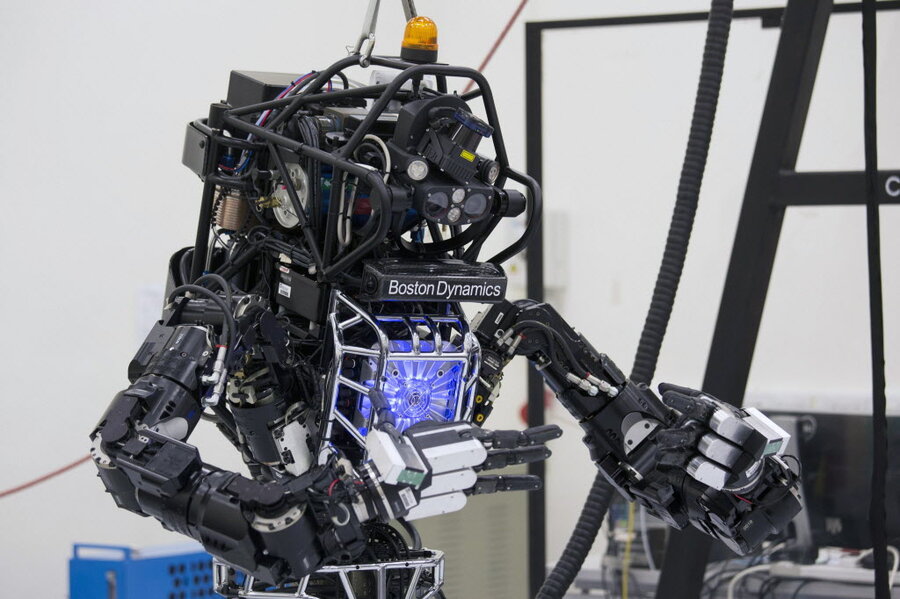DARPA Robotics Challenge opens in Florida
Loading...
Never has turning on a hose been so dramatic.
But for the 17 humanoid robots competing in the DARPA Robotics Challenge, which began its second of three rounds this morning, it is basic tasks like this – tasks that are, of course, not so basic at all when a robot is being asked to do them – that will demonstrate these robot’s abilities to be the first responders in disaster zones too dangerous for humans.
The second round of DARPA’s competition, which will award a $2 million prize to the developers of a sophisticated robot that can operate in extreme emergencies, will run for two days at Florida’s Homestead Miami Speedway. It is open to public viewing, and it is also being broadcast live on DARPA’s website.
DARPA’s challenge was announced following the March 2011 Fukushima nuclear disaster. Radiation levels had kept human responders from entering the reactor and turning a critical valve that would have vented the facilities of hydrogen, which eventually exploded and upped the level of disaster in an already disastrous situation, DARPA says. A sophisticated robot, the agency has said, could have gone into the reactor and turned the valve. But that robot, unfortunately, does not yet exist.
Enter DARPA’s competition. Over the summer, 26 robotics teams – including teams from two NASA departments – competed in the challenge’s first round, called the Virtual Robotics Challenge. In this round, teams used software of their own design to navigate a virtual robot through a computerized post-apocalyptic, suburban environment. Formidable challenges for the teams had included telling their simulated robots to turn on a garden hose.
This second round of competition is the first time that the 17 teams that moved forward are meeting in the real world. The second-round trials include eight different tasks for the robotic challengers, among them ascending an 8-foot ladder, boring a triangular hole into a concrete wall, and, in the “hardest single task,” driving a car (the really hard part is getting the robot out of the driver’s seat). The team’s robots will also once again encounter the insidious hose – this time, a real one – and will have to uncoil it and screw it into a spigot.
“Disasters are unpredictable in their manifestation and effects, so the type of robots DARPA envisions to aid in these situations must be adaptable,” writes DARPA, on the competition page. “Realism is at the heart of the DRC Trials’ tasks.”
Six of these teams are competing in Track A of the trials, designated for teams that are using robots of their own design. This group includes the Johnson Space Center’s Valkyrie robot – a big, white “superhero” robot – and the NASA Jet Propulsion Lab’s apelike RoboSimian Robot.
Track B and C teams will use their own software to operate Boston Dynamics' Atlas, a steely, 330-lb. robot that looks as if it would sooner turn on us than save us.
Track A, B, and C teams are all receiving DARPA funds to design their robots, the software to run them, or both. The second round trials also include Track D teams, which are receiving no funding from DARPA. These teams – two from the US, one from South Korea, and one from China – are using robots of their own design.
The final trial will take place next December. Competitors’ robots will have to again surmount a series of tasks but now with subpar communications between the human controllers and the robots, in expectation that a disaster zone would be cut off from normal communications networks.






